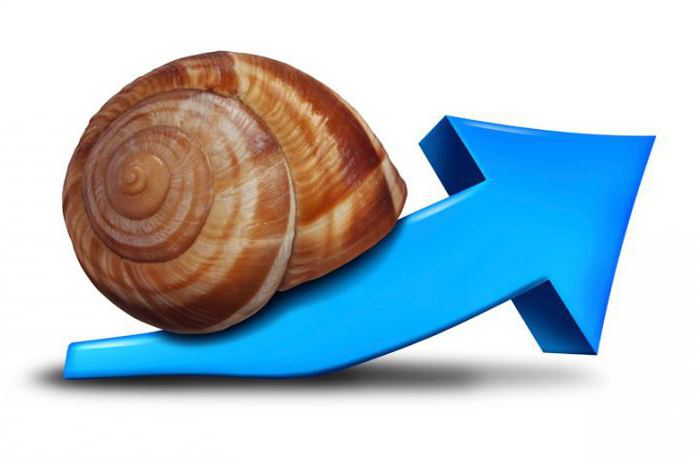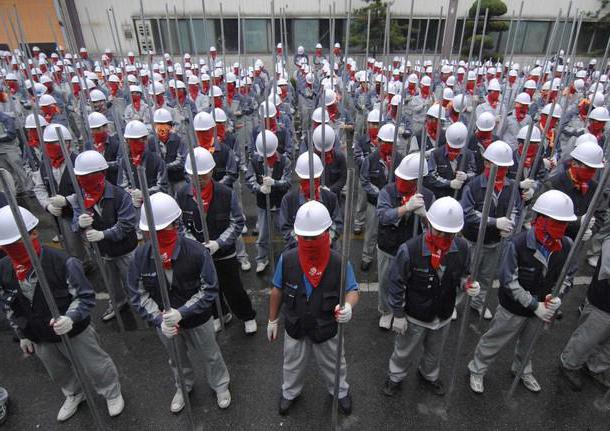The economy of any country in one or another period is in one of four states: it can grow, fall, experience a crisis or stand still. The latter phenomenon is called stagnation, or stagnation. This is the stage of economic development of the state, when its basic indicators do not express any obvious change.

Characteristics of Economic Stagnation
They say about stagnation in the economy, if within six months the volume of GDP shows almost zero dynamics. During this period, business activity decreases, production, trade and investment decrease. Unemployment and inflation are growing in the country, and the purchasing power of the population and its general standard of living are declining. All these phenomena do not appear overnight, but gradually develop against the background of a lack of economic growth. In this sense, the stagnation of development resembles a swamp: it also does not absorb the victim instantly, but slowly draws it into its abyss.
Negative economic changes cannot but affect the domestic political situation. Against the background of a decline in living standards, the population is growing dissatisfied with the country's leadership, protest moods are growing. To suppress such phenomena, the state introduces additional measures restricting the rights and freedoms of citizens, and tougher sanctions.

Monopolistic stagnation
Stagnation may begin as a result of the emergence of monopolies - large companies in whose hands the bulk of the resources of an industry are concentrated. This leads to the destruction of competition - the main mechanism of self-regulation of a market economy. The monopolist becomes the only (or almost the only) producer and seller of goods and services in this market.
As a result, stagnation inevitably occurs in the industry over time. This happens because the monopolized sphere is deprived of the development stimulus. In the absence of rivals, the monopolist is not interested in improving product quality and lowering production costs. He will not invest in scientific and technological developments and master new technologies. If there are many monopolized spheres and / or they are budget-forming, then stagnation gradually covers the entire economy.

Transient stagnation
Transitional stagnation is an economic stagnation as a result of the abandonment of a regulated economy in favor of market relations. It is primarily associated with gross errors in the economic policy of the government, in particular with the lack of a well-developed plan for the transition from one system to another. At the same time, there is an outflow of capital from the country and a decrease in the rate of production. The destruction of previously established economic ties is taking place, and previous experience becomes inapplicable in the new realities. The state simply cannot offer the world market any competitive goods or services.
Causes and consequences
Stagnation is a consequence of a combination of certain negative phenomena:
- economic policy errors;
- poor funding of science;
- poor performance by the state of its controlling functions;
- corruption and red tape;
- low qualification of leading cadres.
Most often, stagnation is a stage preceding a recession or a collapse of the economy. An example is the USSR during its sunset. Following the end of World War II, economic growth began in the country, which continued until the beginning of the 70s. The next 15 years can be called the era of stagnation.The need for economic reform was brewing, which began in the mid-80s (perestroika). However, serious miscalculations were made, and the old system of the planned economy was destroyed too quickly. To the conditions of free market competition the state was poorly prepared. As a result, another country, Russia, was forced to reap the fruits of the economic mistakes of the Soviet period. The stagnation of the 70-80s of the last century was replaced by a deep crisis of the 90s.

Coping measures
If stagnation began as a result of the formation of monopolies, then the forces of the government should be aimed at eliminating those. First of all, it is necessary to strongly encourage the manifestation of entrepreneurial initiative. The state should provide financial and / or legal support to new companies so that competition develops in the monopolized industry over time. When stagnation of economic growth is associated with a transition period, the fight against it becomes even more difficult. A universal approach to overcoming it does not exist.
In any case, it is necessary to carry out diversification of the economy: develop non-traditional areas for the state, develop new types of production, expand the range of products and enter new markets. Of great importance are investments in research and development. We should move towards the introduction of innovations, the development of high-tech and knowledge-intensive sectors of the economy.

Stagnation is a natural stage of the economic cycle, which means that it is impossible to avoid it. This process should be considered as a sign of emerging crisis phenomena in the economy. The depth and consequences of stagnation for the state depend on how adequate and timely measures to overcome stagnation are taken by the government of the country. With the wrong approach, it can drag on for years or cause a serious economic crisis.
